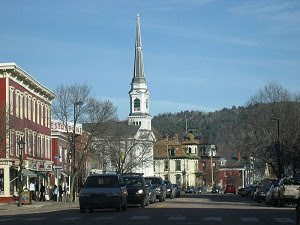Agriculture and Industry Heritage Museums Historic Sites Small Towns
and Downtowns
Agriculture
and Food Heritage experience Vermont’s thriving
food and arts scene, local cuisine from artisan chefs, creative food companies,
and passionate farmers thriving alongside artists sharing their arts and
crafts.
Museums tell the story of Vermont’s heritage, arts and crafts. Early
Vermonters were hardworking and industrious; museums of agriculture and
industry tell the stories of how natural resources were employed to help
provide for families and build Vermont: the American Precision Museum in Windsor, the Billings Farm in
Woodstock, the New England Maple in
Pittsford, the Vermont Granite
in Barre and the Vermont Marble
Museum in Proctor.
Learn the Stories of Shipwrecks the Lake Champlain Maritime Museum in Vergennes
Downtowns
and Small Towns Vermont's thriving
downtowns are where visitors and residents find the distinctive local
businesses, historic buildings, and rich cultural and social activities that
form Vermont's special sense of community. These authentic and attractive
downtowns and villages are recognized as a key part of the state’s allure.
Vermont Downtowns are a Centerpiece of Community Life
The
Downtown Program, established in
1994, is a revitalization effort that builds on each community’s history; these
local efforts have demonstrated how revitalization encourages the local economy
and cultural institutions, while supporting growth in a way that minimizes
environmental impacts.
Waterbury is a vibrant community in the Green Mountains, encompassing Waterbury
Village, Colbyville and Waterbury Center. A 20-minute drive from
Montpelier, 30 minutes from Burlington, and midway between the resort areas of
Stowe and the Mad River Valley, Waterbury sits at the intersection of three of
Vermont’s most heavily traveled and scenic roads. Downtown is home to a
colorful mix of residential neighborhoods, civic and cultural facilities,
independent small businesses and the Ben & Jerry Factory.
Newport lies on the southern shore of Lake Memphremagog just a few miles
south of the Quebec border. Visitors can pursue year-round outdoor
adventures, including boating, swimming, hiking, biking, fishing, skiing, and
snowmobiling.
Newport eateries source local foods and turn them into award winning
dishes
Burlington and its walkable waterfront are home to a thriving arts scene,
creative entrepreneurship, great shopping, three colleges and a university, and
a full range of four-season outdoor pursuits. Fountains, a brick-paved
pedestrian mall, and historic buildings ranging in style from Victorian to Art
Deco and Streamline Modern provide the backdrop for the Church Street
Marketplace. The nearby waterfront includes lakeside parks, ferry crossings,
excursion boats, and a 12.5-mile walk and bike path that connects to the Lake
Champlain Islands and its 200 miles of shorelines.
one of the best 100 small arts towns in America
Montpelier is the largest urban historic district in Vermont. Of the
exquisite historic buildings, the crown jewel is the impeccably restored State
House, one of the oldest and best preserved in the country. Three blocks away
is the city’s bustling business district where independently owned shops
offering books, recordings, clothing, fine crafts and pastries.
Your Destination Vermont Travel
Plan









